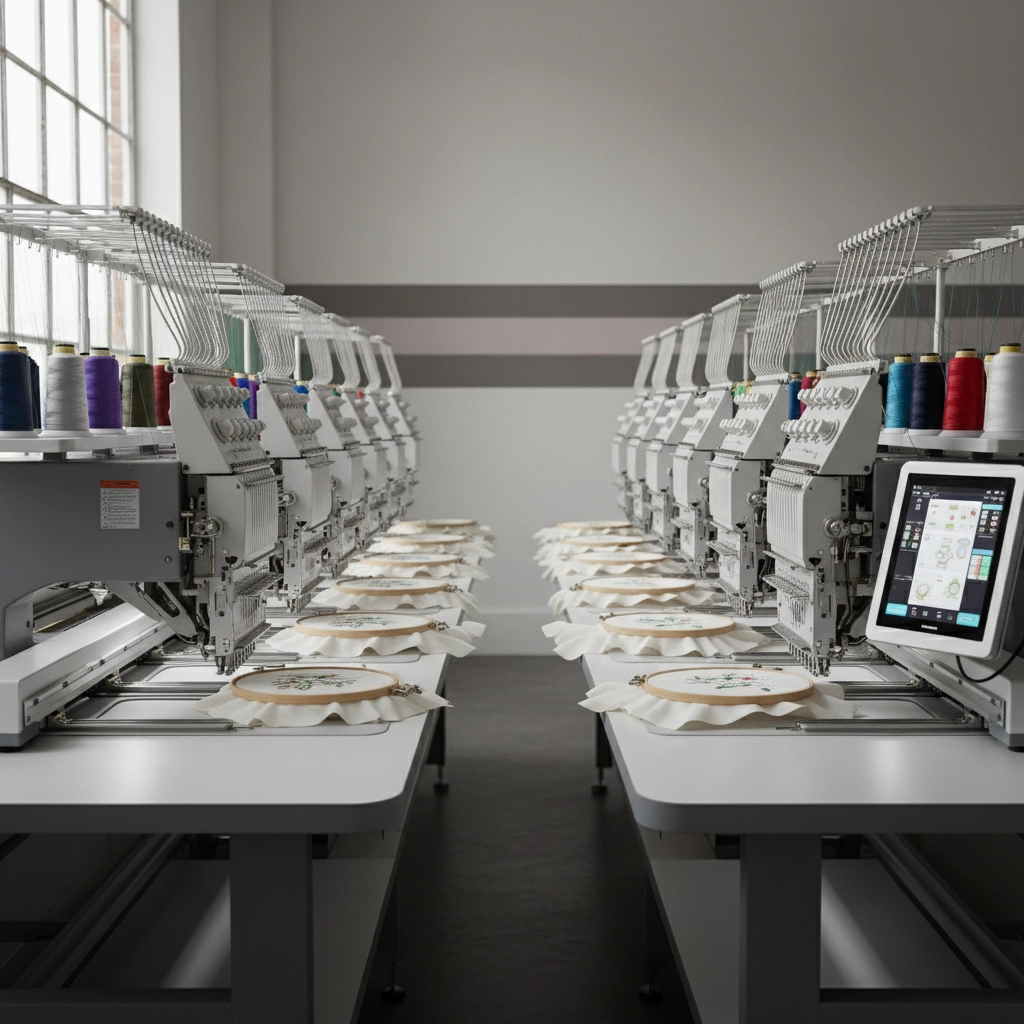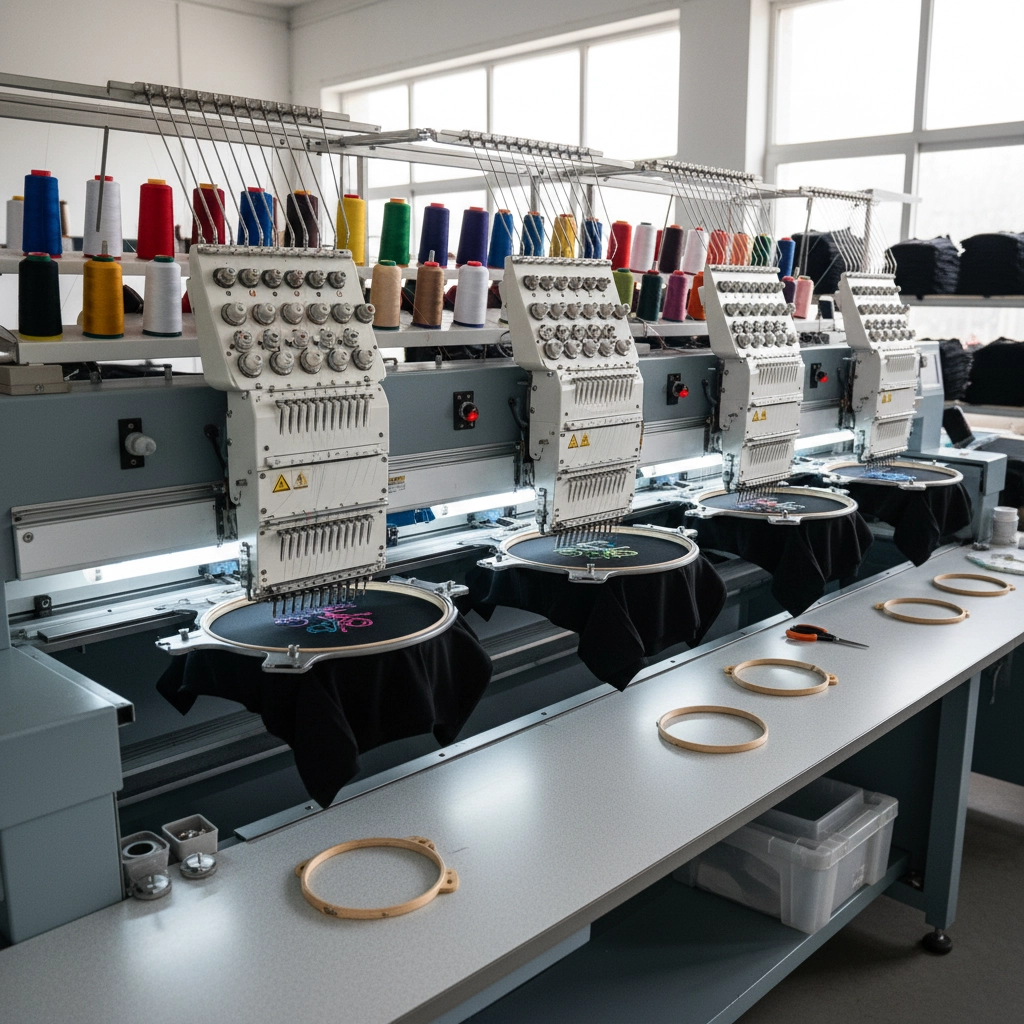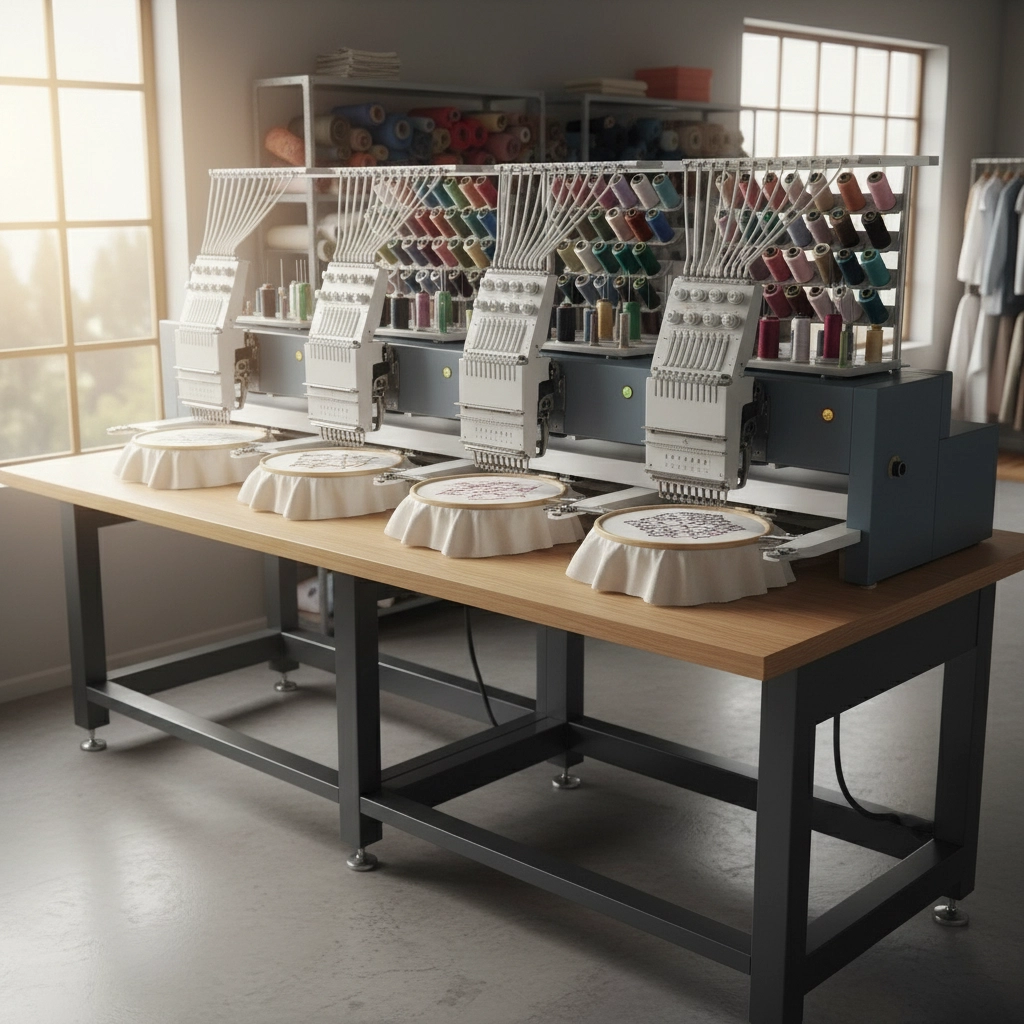Let's be honest, when you first look at an embroidery machine, it can feel a bit like staring at the cockpit of an airplane. All those buttons, screens, and threading paths might make you wonder if you need an engineering degree just to embroider your name on a hat! But here's the truth we've learned after working with countless customers at Artemis: embroidery machines really aren't as scary as they look.
The short answer? No, embroidery machines aren't hard to use, but they do come with a learning curve that requires some patience and practice. Think of it like learning to drive a car. At first, you're overwhelmed by all the mirrors, pedals, and controls. But once you get the hang of it, it becomes second nature.
The Reality Check: Yes, There's a Learning Curve
We won't sugarcoat it, there is definitely a learning phase when you're starting out with machine embroidery. Most beginners experience a bit of anxiety during those first few projects, and honestly? That's totally normal! Your first attempts probably won't look like the Pinterest-perfect embroidery you've been dreaming about, and that's okay.
The key thing we always tell our customers is this: don't expect perfection right out of the gate. You're learning a new skill that involves understanding how thread, fabric, and machinery work together. It takes time to develop the muscle memory and intuition that makes everything click.

What Beginners Should Really Expect
When you first start using an embroidery machine, here's what you can realistically expect:
Week 1-2: The "What Did I Get Myself Into?" Phase You'll spend most of your time learning basic operations, how to thread the machine, load designs, and set up your hoop. Don't be surprised if simple tasks take forever at first. We've seen people spend an hour just figuring out the threading path!
Week 3-4: The "Aha!" Moments Begin Things start clicking. You'll begin to understand why tension matters, how stabilizers work, and why your hoop placement is crucial. Your finished projects start looking more intentional and less like happy accidents.
Month 2-3: Building Confidence By now, you're troubleshooting minor issues on your own and experimenting with different techniques. You might even start feeling brave enough to try more complex designs.
Breaking Down the "Scary" Features
Let's demystify some of those intimidating buttons and features you'll encounter:
The LCD Screen Modern embroidery machines have touchscreens that display your design, stitch count, and progress. Think of it as your mission control, it tells you everything you need to know about what's happening.
Threading Path Numbers Those little numbered guides (usually 1-9) aren't there to confuse you, they're your roadmap! Follow them in order, and you'll thread your machine correctly every time.
Tension Dials These control how tight or loose your thread sits. Most machines have automatic tension, but understanding this concept helps when things go wonky.
Hoop Selection Different hoop sizes accommodate different project sizes. Start with a medium hoop, it's the most versatile for learning.

The Essential Skills You Need to Master
We always tell beginners to focus on mastering these fundamental skills before getting fancy:
Threading Like a Pro This is your foundation. Learn to follow that numbered threading path religiously, making sure the thread passes through every single guide. Missing even one can cause problems down the line.
Hooping Technique Think of hooping as making a sandwich, stabilizer on the bottom, fabric in the middle, and everything held together by your hoop. The fabric should be taut but not stretched. Too loose, and you'll get puckering. Too tight, and your design might distort.
Understanding Stabilizers Different fabrics need different types of support. Cotton t-shirts need different stabilizers than stretchy knits or heavy denim. Once you understand this relationship, your embroidery quality will improve dramatically.
File Management Learn the difference between design files and stitch files, and understand what formats your machine accepts. This knowledge prevents a lot of frustration later.
Making It Less Intimidating: Our Best Tips
Start Small and Simple Don't jump into complex multi-color designs right away. Begin with single-color text or simple shapes. Master the basics before attempting that intricate floral design you found online.
Practice on Scraps First Always test new designs, threads, or techniques on practice fabric before working on your final piece. This saves materials and reduces frustration.
Join Online Communities The embroidery community is incredibly supportive! Join Facebook groups or forums where beginners ask questions and experienced embroiderers share tips.
Keep a Project Journal Note what worked and what didn't. Which stabilizer worked best with which fabric? What tension settings gave you the best results? This becomes your personal reference guide.

Choose User-Friendly Designs Some designs are definitely more beginner-friendly than others. Look for designs with fewer color changes, simpler shapes, and lower stitch counts when you're starting out.
Common Beginner Mistakes (And How to Avoid Them)
We've seen these mistakes countless times, so don't feel bad if you make them too:
Rushing the Setup Taking shortcuts with hooping or stabilizing always comes back to bite you. Spend the extra few minutes doing it right.
Ignoring Thread Quality Cheap thread might seem like a good way to save money, but it often causes more problems than it's worth. Invest in decent thread from the start.
Overcomplicating Things You don't need every attachment, specialty foot, or advanced technique right away. Master the basics first.
The Bottom Line: Is It Worth It?
Here at Artemis, we've watched hundreds of people go from complete beginners to confident embroiderers. The transformation is always amazing to see. Yes, there's a learning curve, but it's absolutely manageable with patience and practice.
Most people find that once they get past those initial few weeks of feeling overwhelmed, embroidery becomes genuinely enjoyable. There's something incredibly satisfying about watching your design come to life, stitch by stitch.
Remember, every expert was once a beginner. That person whose embroidery you admire on social media? They started exactly where you are now, probably feeling just as intimidated by their first machine.
The truth is, modern embroidery machines are designed to be user-friendly. Manufacturers know that intimidating customers doesn't sell machines, so they've worked hard to make the learning process as smooth as possible.
So, are embroidery machines hard to use? They require learning and patience, but they're definitely not impossible. With the right mindset, some basic instruction, and willingness to practice, you'll be creating beautiful embroidered pieces sooner than you think.
Summary: Embroidery machines aren't inherently difficult to use, but they do require patience and practice to master. Beginners should expect a learning curve of several weeks while mastering essential skills like threading, hooping, and stabilizer selection. With proper expectations, user-friendly designs, and consistent practice, most people find embroidery machines become quite manageable and enjoyable to use.

